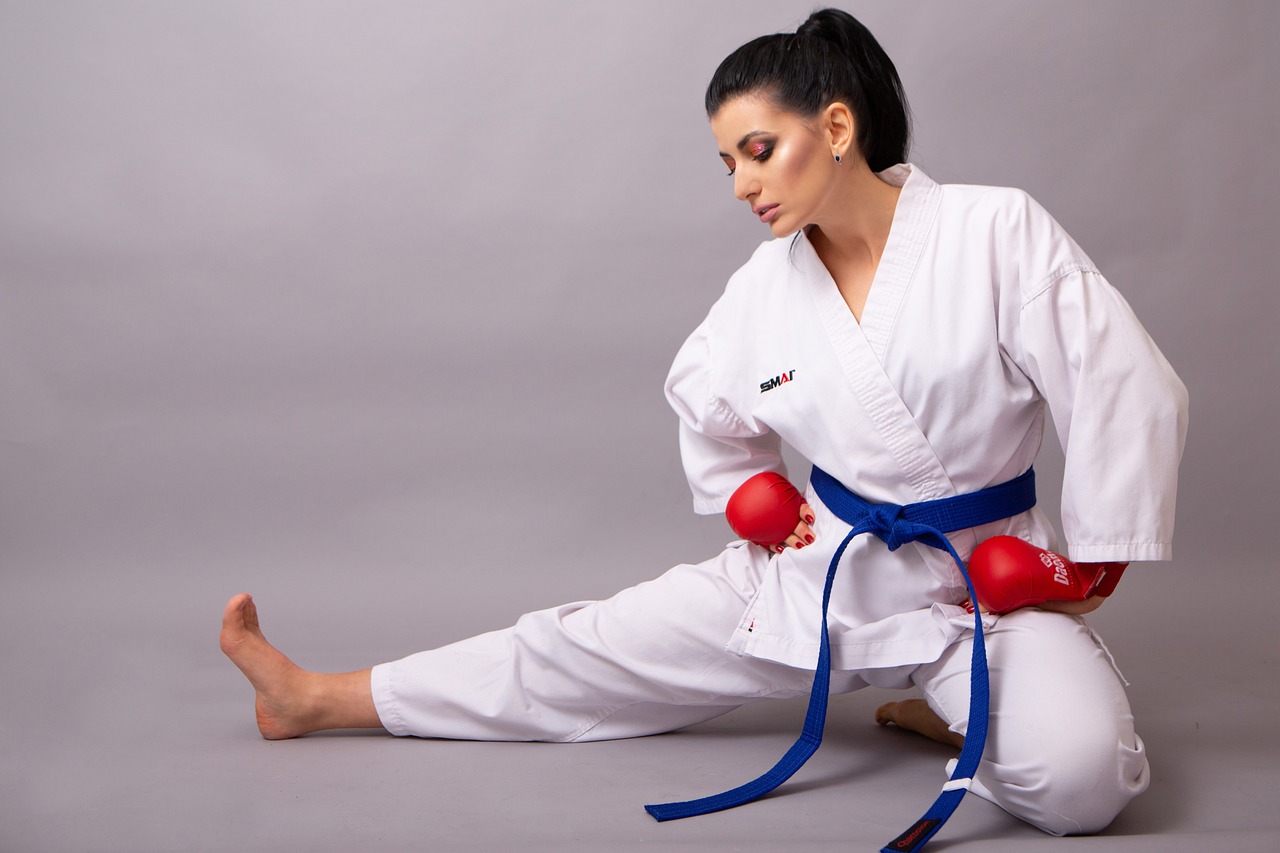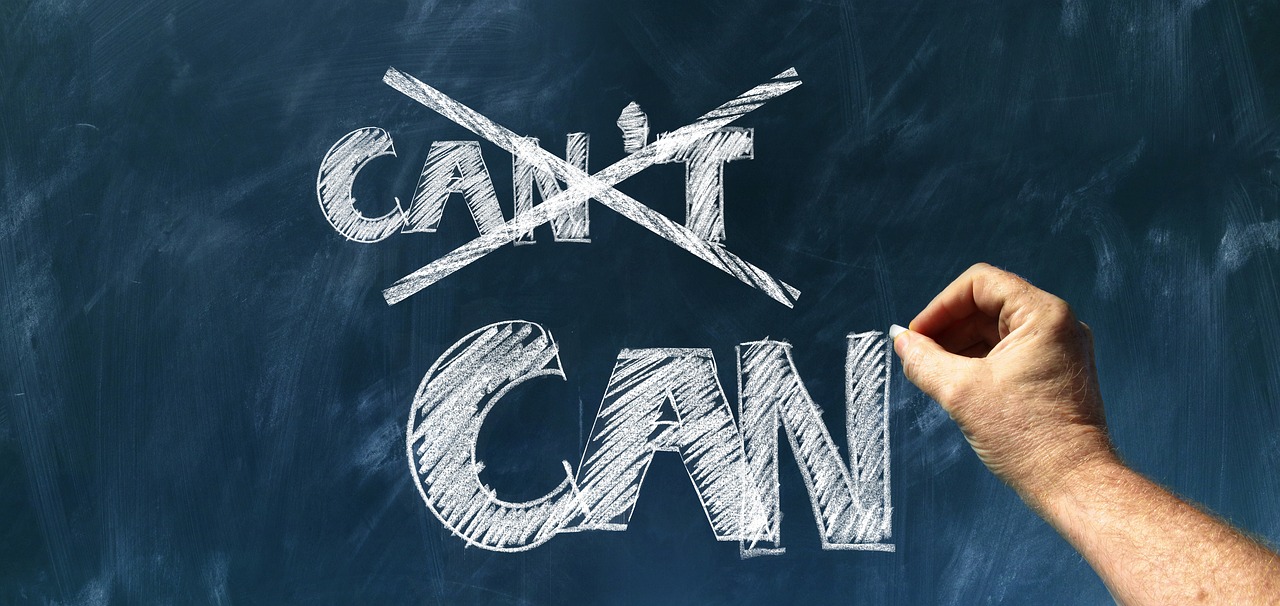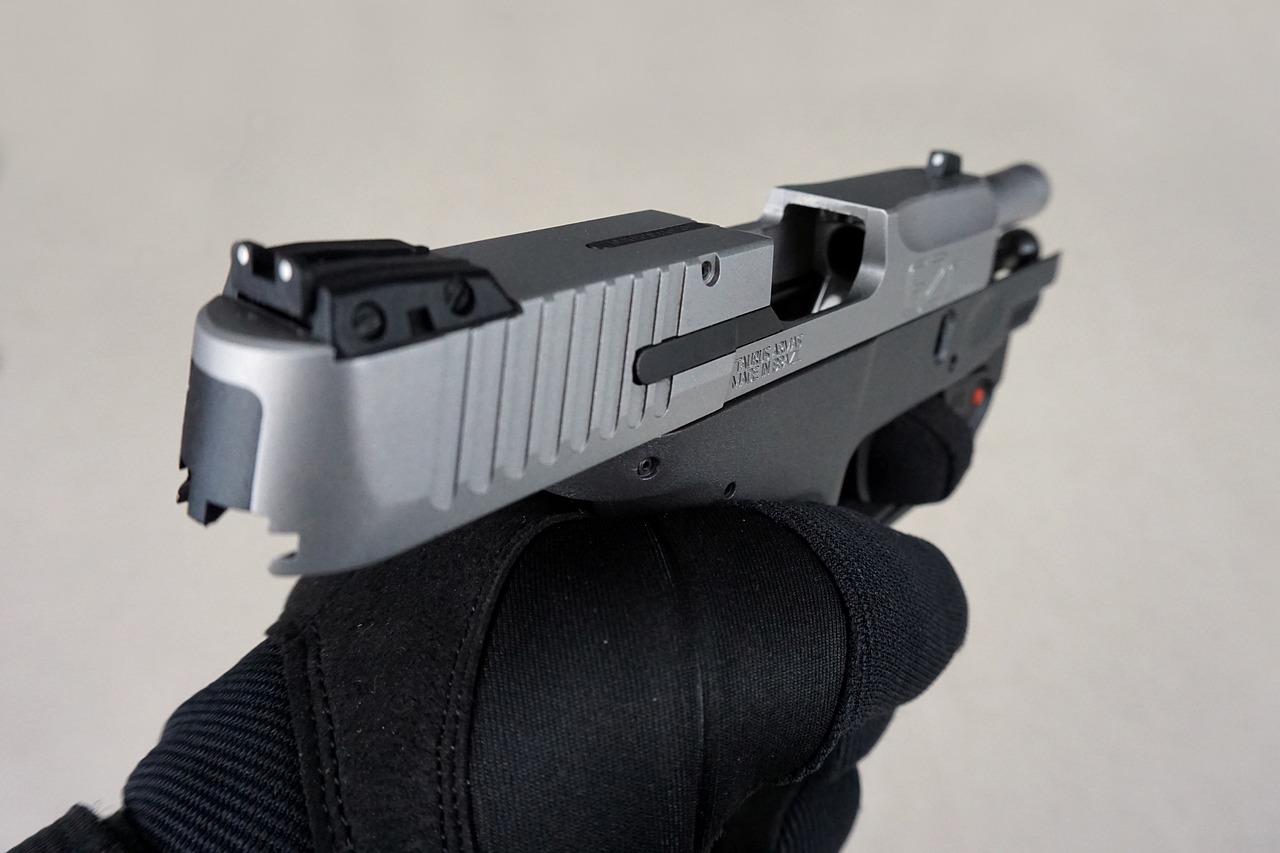How to use Self-Defense Techniques to Protect Loved Ones?
In today’s unpredictable world, the safety of our loved ones is a priority that cannot be overlooked. Every parent, partner, or friend has felt that pang of anxiety when thinking about the potential dangers lurking around us. But what if I told you that you could empower yourself and your loved ones with effective self-defense techniques? Imagine being able to walk down the street with confidence, knowing that you have the tools to protect those who matter most to you. This article will guide you through practical skills and mental preparedness that can make all the difference in safeguarding your loved ones in various situations.
Self-defense isn’t just about physical strength; it’s also about awareness, strategy, and preparation. It’s like a mental chess game where you anticipate moves and counter them before they even happen. The beauty of self-defense lies in its accessibility—anyone can learn it, regardless of age or fitness level. Whether you're a concerned parent, a protective partner, or just someone who wants to feel secure in your environment, understanding the basics of self-defense can be a game-changer.
Throughout this article, we will explore essential self-defense techniques, how to identify potential threats, and the importance of training and creating a safety plan. By the end, you’ll not only be equipped with knowledge but also with the confidence to act decisively when it matters the most. So, let’s dive into the world of self-defense and learn how to protect our loved ones effectively!
Before diving into techniques, it’s crucial to understand the basics of self-defense. This isn’t just about fighting back; it’s about knowing when and how to protect yourself and your loved ones legally and ethically. Self-defense laws vary by location, so it’s important to familiarize yourself with the regulations in your area. For instance, did you know that in some places, you may only use reasonable force to protect yourself? This means that understanding the legal implications of your actions can prevent unnecessary complications down the line.
Moreover, self-defense is not just about physical confrontations. It often involves de-escalating a situation before it turns violent. Learning to read body language and recognizing aggressive behaviors can be just as important as knowing how to throw a punch. Remember, the goal is to protect, not to provoke. By understanding these principles, you can approach self-defense with a mindset that prioritizes safety and responsibility.
Recognizing potential threats is a critical skill in self-defense. It’s like having a sixth sense that alerts you to danger before it becomes imminent. Whether you’re walking in a dimly lit parking lot or in a crowded area, being aware of your surroundings can make all the difference. So, what should you look for? Common danger signs include:
- Unusual behavior from individuals nearby
- People loitering in suspicious ways
- Groups that seem overly aggressive or rowdy
Situational awareness is your best friend. It’s about being conscious of what’s happening around you and trusting your instincts. If something feels off, it probably is. By honing this skill, you can identify risks before they escalate into dangerous situations.
Enhancing your situational awareness can be as simple as practicing mindfulness. Take a moment to observe your surroundings—notice the people, the sounds, and the environment. This practice can help you become more attuned to changes that might indicate a potential threat. Think of it as being the main character in your own action movie, where you’re always on the lookout for the next plot twist!
Learning how to scan your environment effectively is crucial. This means not just looking but really observing. When you enter a new space, take a few seconds to assess exits, potential hiding spots, and any individuals who seem out of place. Your mind can be a powerful tool in recognizing patterns and anomalies. For example, if you notice someone pacing back and forth while frequently glancing at their phone, it might be worth keeping an eye on them.
Understanding behavioral cues can alert you to possible danger. Look for signs of aggression, such as:
- Clenched fists or jaw
- Intense eye contact
- Sudden movements or erratic behavior
These cues can be your early warning system, giving you the chance to act before a situation escalates. Remember, awareness is your first line of defense!
Now that you’re aware of potential threats, let’s explore some self-defense techniques that can be employed in real-life scenarios. These techniques range from physical maneuvers to verbal strategies aimed at de-escalating conflicts. It’s important to remember that the best defense is often to avoid confrontation altogether, but in situations where that’s not possible, having a few techniques in your back pocket can be invaluable.
Whether it’s learning how to break free from a grip or using your voice to assert your boundaries, every skill you acquire adds to your confidence and ability to protect your loved ones. Self-defense is about empowerment, not fear. You’re not just learning to fight; you’re learning to stand your ground and ensure the safety of those you care about.
Regular training is vital for effective self-defense. Just like any skill, the more you practice, the better you become. Finding the right self-defense classes can make a world of difference. Look for classes that focus on practical techniques and real-world applications—these will equip you with the skills you need to protect your loved ones effectively.
Choosing a self-defense class that suits your needs is essential. Look for instructors who emphasize safety and empowerment. A good class should not only teach you how to defend yourself but also instill confidence and awareness. Consider asking about the curriculum, the instructor's experience, and the class size to ensure you get the most out of your training.
Repetition is key to mastering self-defense techniques. Drilling the skills you learn in class will help them become second nature. Think of it like practicing a sport—you wouldn’t expect to excel without putting in the time on the field! Regular practice ensures that when an emergency arises, your responses are instinctive and effective.
A well-thought-out safety plan can enhance protection for your loved ones. This plan should incorporate self-defense techniques, emergency protocols, and communication strategies. Think of it as your family’s roadmap to safety, outlining what to do in various scenarios. Having a plan can significantly reduce panic and confusion in a crisis.
Establishing emergency contact protocols ensures everyone knows what to do in a crisis. Create a communication plan that includes:
- Designated emergency contacts
- Safe meeting points
- Clear instructions for various scenarios
By having this plan in place, you can ensure that your loved ones know how to respond quickly and effectively during an emergency.
Role-playing different scenarios can prepare your loved ones for real-life situations. It’s like a dress rehearsal for safety! Practicing responses to various threats through simulated exercises can help everyone feel more comfortable and confident in their abilities. Plus, it’s a great way to bond as a family while ensuring everyone is on the same page regarding safety.
Q: What should I do if I feel threatened?
A: Trust your instincts. If you feel threatened, try to remove yourself from the situation if possible. If not, use your voice to assert yourself and seek help from others around you.
Q: Are self-defense classes suitable for all ages?
A: Yes! Many self-defense classes are designed for different age groups and fitness levels. Look for classes that cater to your specific needs.
Q: Can self-defense techniques be effective against larger attackers?
A: Absolutely! Self-defense techniques often focus on leverage and quick movements that can be effective regardless of size. The key is to target vulnerable areas and act decisively.
Q: How often should I practice my self-defense skills?
A: Regular practice is essential. Aim to practice your skills at least once a week to keep them fresh and instinctual.

Understanding Self-Defense Basics
When it comes to self-defense, understanding the basics is not just about knowing how to throw a punch or execute a kick; it's about grasping the legal and ethical implications of your actions. Self-defense can often be a gray area, where the line between protecting yourself and crossing into unlawful territory can be thin. Therefore, it's crucial to educate yourself on when and how to use self-defense techniques appropriately.
First and foremost, let’s talk about the legal aspects. In many jurisdictions, self-defense is justified only when you are faced with an imminent threat. This means that the danger must be real and immediate. If someone is merely arguing with you, it does not provide grounds for physical retaliation. Understanding your local laws regarding self-defense is essential to avoid legal repercussions. For instance, some places have "stand your ground" laws, while others require you to retreat if possible.
Ethically, self-defense should always be a last resort. The goal is to protect yourself and your loved ones, not to escalate a situation. Consider self-defense as a tool for de-escalation rather than aggression. This mindset can help you navigate tense situations more effectively. Think of it like using a fire extinguisher: you don’t want to use it unless absolutely necessary, and when you do, you aim to put out the fire, not start a new one.
In addition to legal and ethical considerations, mental preparedness plays a significant role in self-defense. A well-prepared mind can often make the difference between freezing in fear and taking decisive action. This involves not only recognizing potential threats but also being mentally ready to respond appropriately. So, how can you prepare yourself mentally? Here are some strategies:
- Visualize Scenarios: Imagine different situations where you might need to use self-defense. This mental rehearsal can help you feel more confident and ready to act.
- Stay Calm: Practice calming techniques, such as deep breathing, to maintain your composure in stressful situations.
- Educate Yourself: Knowledge is power. The more you know about self-defense techniques and the legal framework surrounding them, the more confident you will feel.
Ultimately, understanding the basics of self-defense is about striking a balance between being prepared and being responsible. It’s not just about physical strength; it’s about using your mind to navigate potentially dangerous situations wisely. As you delve deeper into self-defense, remember that your goal is to protect—not to provoke. With this foundation, you're better equipped to safeguard your loved ones effectively.
Q1: What should I do if I feel threatened?
A1: Trust your instincts. If you feel threatened, try to remove yourself from the situation if possible. If escape isn't an option, be prepared to defend yourself using the techniques you have learned.
Q2: Are there specific self-defense moves I should learn?
A2: Yes! Focus on techniques that allow you to get away from an attacker rather than engaging in a prolonged fight. Moves such as wrist grabs, strikes to vulnerable areas, and escapes from holds are practical.
Q3: Can self-defense training help with confidence?
A3: Absolutely! Regular training not only teaches you techniques but also boosts your confidence, making you feel more secure in your ability to handle potential threats.

Identifying Potential Threats
Recognizing potential threats is crucial for effective self-defense. It’s not just about knowing how to fight; it’s about being aware of your surroundings and understanding when a situation might turn dangerous. Think of it like a radar system—if you can pick up on subtle cues, you can often avoid conflict before it even starts. So, how do you become more attuned to these signs? Let’s dive into some common danger signs and situations that may require heightened awareness.
First and foremost, situational awareness is key. It’s that gut feeling you get when something doesn’t seem right. You might be walking down the street, and suddenly you notice a group of people acting unusually. This is your cue to pay attention. Situational awareness isn’t just about looking out for the obvious threats; it’s about being mindful of your environment as a whole. Are there too many people crowded in one spot? Is someone following you? These are all indicators that should raise your alertness.
To enhance your situational awareness, you can adopt a few simple techniques. For instance, practice environmental scanning—this means taking a moment to observe your surroundings. Look for exits, assess the behavior of people around you, and identify anything that feels off. It’s like being a detective in your own life. The more you practice this, the more instinctive it will become.
Learning how to scan your environment effectively can help you detect potential threats. Start by making it a habit to regularly glance around as you walk. This doesn’t mean you have to stare at everyone, but rather, take in the whole picture. For example, if you’re in a parking lot, look for anything out of the ordinary, such as a car that seems to be lingering longer than necessary. This simple act can be the difference between feeling secure and being caught off guard.
Another critical aspect of identifying potential threats is understanding behavioral cues. People often give off signals that can indicate aggression or intent. For instance, if someone is invading your personal space, clenching their fists, or avoiding eye contact, these might be red flags. Here are a few common signs to watch for:
- Body Language: Aggressive stances, such as squared shoulders or tense muscles.
- Facial Expressions: Frowning or glaring can indicate hostility.
- Vocal Tone: Raised voices or harsh tones can signal escalating tension.
By honing in on these cues, you can better assess whether a situation is escalating and react accordingly. Remember, it’s all about being proactive rather than reactive.
In summary, identifying potential threats requires a combination of situational awareness and understanding of behavioral cues. By being vigilant and practicing these techniques, you can create a safer environment for yourself and your loved ones. It’s not just about knowing how to defend yourself physically; it’s about having the insight to avoid conflict altogether. So, the next time you step out, keep your eyes and ears open—your instincts will thank you!
Q: What should I do if I feel threatened?
A: Trust your instincts. If you feel threatened, remove yourself from the situation if possible. Seek assistance or contact authorities if necessary.
Q: How can I improve my situational awareness?
A: Practice being observant in everyday situations. Take note of your surroundings, and regularly assess the behavior of people around you.
Q: Are there specific self-defense classes for beginners?
A: Yes! Many local gyms and community centers offer self-defense classes tailored for beginners. Look for classes that emphasize practical techniques and real-world applications.
Q: How often should I practice self-defense techniques?
A: Consistency is key. Aim to practice at least once a week to build muscle memory and confidence in your skills.

Situational Awareness
Situational awareness is a critical skill in the realm of self-defense, acting as your first line of defense against potential threats. Imagine walking through a crowded market or a quiet park; it’s easy to get lost in your thoughts or your phone, but doing so can leave you vulnerable. Being aware of your surroundings means being conscious of the people, places, and activities around you, allowing you to identify risks before they escalate into dangerous situations.
To enhance your situational awareness, you can adopt a few practical techniques that keep your senses sharp and your mind alert. First, consider the concept of the 360-degree scan. This involves periodically looking around you, assessing not just the immediate area but also the periphery. Are there people loitering? Is someone acting suspiciously? By taking a moment to observe your environment, you can gather vital information that can help you make informed decisions.
Next, engage in active listening. Sounds can often provide clues about potential dangers. For instance, if you hear raised voices or sounds of a struggle, it’s essential to pay attention. This doesn’t mean you should jump to conclusions, but being alert to your auditory surroundings can give you an early warning sign. In addition, it’s important to trust your instincts. If something feels off, it probably is. Your gut feelings can often pick up on cues that your conscious mind may overlook.
Another technique is to practice environmental scanning. This involves a systematic approach to observing your surroundings. For example, when entering a new place, take a mental note of exits, potential hiding spots, and the location of other people. This can help you formulate an escape plan or identify safe zones if a situation escalates. Here are a few tips to improve your environmental scanning:
- Make it a habit to glance around when entering a new space.
- Identify the nearest exits and safe areas.
- Observe the behavior of those around you for any signs of aggression.
Lastly, understanding behavioral cues is vital. People often communicate their intentions through body language before they even say a word. For instance, clenched fists, aggressive postures, or a lack of eye contact can indicate that someone may be feeling hostile. By recognizing these signs early, you can take proactive measures to protect yourself and your loved ones. Remember, situational awareness is not just about being vigilant; it’s about being prepared and knowing how to react when the unexpected occurs.
Q: How can I practice situational awareness in my daily life?
A: You can practice situational awareness by consciously observing your surroundings, engaging in active listening, and regularly scanning your environment. Make it a habit to assess your surroundings whenever you enter a new space.
Q: What should I do if I notice suspicious behavior?
A: If you notice suspicious behavior, trust your instincts. Maintain a safe distance, avoid confrontation, and if necessary, contact authorities or seek help from nearby individuals.
Q: Can situational awareness help prevent dangerous situations?
A: Yes, situational awareness can significantly reduce the risk of encountering dangerous situations by allowing you to identify potential threats early and take appropriate action.

Environmental Scanning
When it comes to self-defense, is a crucial skill that can significantly enhance your ability to protect your loved ones. Imagine walking through a busy street or a quiet park; being aware of your surroundings is not just a good habit—it's a lifesaver. Environmental scanning involves actively observing your environment to identify potential threats before they escalate. This practice is akin to being a detective in your own life, where you gather clues about your surroundings, piecing together information that could be vital for your safety.
To master environmental scanning, you need to develop a keen sense of observation. This means not only looking but truly seeing. Start by training your eyes to notice details that others might overlook. For instance, pay attention to the people around you: are they behaving normally, or do they seem out of place? Look for unusual behaviors that might indicate a potential threat, such as someone loitering without purpose or a group that seems overly aggressive. It’s like playing a game of chess; you must anticipate the moves of others and position yourself accordingly.
Here are some practical tips to enhance your environmental scanning skills:
- Keep your head up: Avoid staring at your phone or being distracted by headphones. Stay alert and engaged with your surroundings.
- Use your peripheral vision: Train yourself to notice movement and changes in your environment without directly focusing on them.
- Trust your instincts: If something feels off, it probably is. Don’t hesitate to remove yourself from uncomfortable situations.
Furthermore, it’s essential to be aware of your environment's physical layout. Familiarize yourself with exits, potential hiding spots, and areas that provide cover. Just like a seasoned pilot knows the layout of an airport, you should know the terrain of the places you frequent. This knowledge can help you make quick decisions in case of an emergency, allowing you to guide your loved ones to safety swiftly.
In addition to your immediate surroundings, consider the broader context of your environment. Is it well-lit? Are there security personnel around? Understanding these factors can help you assess risk levels and make informed choices. For example, walking through a poorly lit alley at night can be a red flag, while a bustling street filled with people may provide a sense of security. Always weigh the pros and cons of your environment, and be prepared to change your route if necessary.
In conclusion, environmental scanning is a skill that requires practice and mindfulness. By honing this ability, you not only protect yourself but also create a safer atmosphere for your loved ones. Remember, safety is not just about physical readiness; it’s also about being mentally prepared and aware of your surroundings at all times.
- What is environmental scanning? Environmental scanning is the process of actively observing your surroundings to identify potential threats and assess risks.
- Why is environmental scanning important for self-defense? It helps you recognize potential dangers before they escalate, allowing for proactive measures to protect yourself and your loved ones.
- How can I improve my environmental scanning skills? Practice being aware of your surroundings, trust your instincts, and familiarize yourself with the physical layout of places you frequent.

Recognizing Behavioral Cues
Understanding and recognizing behavioral cues is a critical skill when it comes to self-defense and protecting your loved ones. Just like a detective reading between the lines of a mystery novel, being able to decipher the subtle signs of potential aggression or intent can mean the difference between safety and danger. It’s not just about being alert; it’s about being informed and prepared. So, what exactly should you be looking for?
Firstly, consider the body language of individuals around you. Non-verbal signals can often reveal more than words. For example, someone who is constantly clenching their fists, avoiding eye contact, or invading personal space may be displaying signs of aggression or discomfort. These cues are like flashing warning lights; they indicate that something might not be right. If you notice someone exhibiting these behaviors, it’s wise to maintain a safe distance and keep your loved ones close.
Another important aspect to observe is facial expressions. The human face is a canvas of emotions, and understanding it can provide invaluable insights. A furrowed brow, tightened jaw, or a sneer can all be indicators of hostility. When you see such expressions, think of them as a storm brewing on the horizon. If you can spot the signs early, you may be able to avoid the tempest altogether.
Furthermore, context plays a significant role in interpreting these cues. For instance, someone may appear agitated in a crowded subway but be completely harmless. However, if that same person is in a dimly lit parking lot late at night, their behavior might take on a more threatening tone. Always assess the environment and the situation before jumping to conclusions. It’s like putting together pieces of a puzzle; every detail matters.
To help you better understand these cues, here’s a brief overview of common behavioral signs to watch for:
- Increased agitation: Fidgeting, pacing, or sudden movements can indicate rising tension.
- Closed body language: Crossing arms or legs can signify defensiveness or hostility.
- Heightened vocal tone: An increase in volume or a sharp tone can signal anger or frustration.
- Prolonged eye contact: Staring can often be a challenge or a threat, especially if it feels uncomfortable.
By honing your ability to recognize these behavioral cues, you can enhance your situational awareness and potentially de-escalate a threatening encounter before it escalates into a dangerous situation. Remember, knowledge is power, and being proactive can provide peace of mind for you and your loved ones.
Q: How can I improve my ability to recognize behavioral cues?
A: Practice makes perfect! Observing people in various settings can help you become more attuned to body language and expressions. Additionally, consider taking workshops or classes focused on interpersonal communication.
Q: What should I do if I recognize threatening behavior?
A: Trust your instincts. If you feel uncomfortable, remove yourself and your loved ones from the situation if possible. If you believe there is an immediate threat, contact local authorities.
Q: Can behavioral cues vary by culture?
A: Yes, cultural differences can influence how people express emotions and communicate non-verbally. Being aware of these differences can enhance your understanding of behavioral cues.

Self-Defense Techniques
When it comes to protecting your loved ones, understanding and mastering is not just a luxury—it's a necessity. Imagine being in a situation where you need to act quickly to safeguard someone you care about. The right techniques can mean the difference between safety and danger. In this section, we will delve into various self-defense strategies that can be employed in real-life scenarios, focusing on both physical techniques and non-violent approaches to de-escalate potential threats.
First, let’s talk about the physical techniques. These can range from simple maneuvers to more complex moves, but the key is to choose techniques that are effective regardless of your size or strength. For instance, one of the most effective techniques is the quick escape. This involves using your surroundings to your advantage, like pushing away from an attacker and finding a clear path to safety. Additionally, learning how to use pressure points can be incredibly effective. By targeting sensitive areas on an attacker’s body, you can incapacitate them long enough to make your escape.
Another crucial aspect of self-defense is the use of body language. Sometimes, a confident stance and assertive demeanor can deter potential threats before they escalate. Practicing how to stand tall, make eye contact, and convey confidence can be your first line of defense. You can think of it as the difference between a lion and a gazelle; the lion exudes confidence and strength, while the gazelle may appear vulnerable. Remember, the goal is not just to react but to prevent an attack from happening in the first place.
Moreover, it’s essential to understand the concept of de-escalation. Sometimes, the best self-defense is not physical at all. If you find yourself in a tense situation, using calm communication and body language can diffuse the threat. For example, if someone is aggressive, calmly speaking to them and attempting to understand their perspective can often lead to a resolution without any physical confrontation. It's like trying to put out a fire with water instead of gasoline; the right approach can prevent the situation from igniting further.
For those who prefer a more structured approach, enrolling in a self-defense class can be incredibly beneficial. Many classes focus on practical techniques that can be applied in real-world scenarios. Look for classes that emphasize realistic training and provide opportunities to practice with a partner. This not only builds your confidence but also helps you internalize the techniques so they become second nature. Remember, the more you practice, the more prepared you will be when it matters most.
In summary, mastering self-defense techniques involves a combination of physical skills, mental preparedness, and effective communication. Whether you’re learning to escape a hold, using body language to deter an attacker, or practicing de-escalation strategies, each technique plays a vital role in keeping your loved ones safe. So, gear up, train hard, and remember that being prepared is the best form of protection.
- What should I do if I feel threatened? Trust your instincts and remove yourself from the situation if possible. If you cannot escape, use self-defense techniques to protect yourself.
- Are self-defense classes effective? Yes! Self-defense classes provide practical skills and confidence to handle potential threats effectively.
- Can I use self-defense techniques if I am not physically strong? Absolutely! Many self-defense techniques focus on leverage and pressure points, which can be effective regardless of your physical strength.
- How often should I practice self-defense techniques? Regular practice is essential; try to set aside time weekly to drill techniques and stay sharp.

Training and Practice
When it comes to self-defense, are not just beneficial; they are absolutely essential. Imagine trying to ride a bicycle without ever practicing—chances are, you’d end up in a heap on the ground! The same principle applies to self-defense techniques. Regular training helps you develop muscle memory, which is crucial for responding effectively in high-pressure situations. The more you practice, the more instinctive your reactions will become, allowing you to protect your loved ones when it matters most.
Finding the right self-defense class is the first step in your journey. Not all classes are created equal, and it’s important to choose one that focuses on practical techniques and real-world applications. Look for classes that teach you how to handle various situations, from verbal confrontations to physical altercations. You might ask yourself: “What should I look for in a class?” Here are a few key factors:
- Instructor Experience: Ensure the instructor has a solid background in self-defense and teaching.
- Class Size: Smaller classes often allow for more personalized instruction.
- Realistic Scenarios: Classes should include simulations of real-life situations.
Once you’ve found the right class, the next step is to commit to regular practice. Think of it like training for a marathon; you wouldn’t just run a few times and expect to finish strong. You need to drill techniques consistently to build confidence and proficiency. This is where repetition becomes your best friend. Each time you practice a technique, you’re not just going through the motions; you’re embedding that skill into your muscle memory.
To maximize your training, consider setting up a practice schedule. Consistency is key, and having a plan can keep you motivated. You might want to allocate specific days for different skills, such as:
| Day | Focus Area |
|---|---|
| Monday | Striking Techniques |
| Wednesday | Ground Defense |
| Friday | Situational Awareness |
In addition to formal classes, practicing with friends or family can also be highly beneficial. Role-playing different scenarios can help everyone involved understand their roles and responses in a crisis. This not only builds confidence but also fosters a sense of teamwork and readiness among your loved ones. It’s like rehearsing for a play; the more you practice your lines and movements, the more natural it feels when it’s showtime.
Finally, don’t underestimate the value of self-reflection after each training session. Take a moment to assess what went well and what could be improved. This practice of self-evaluation is crucial in refining your skills and ensuring that you’re always progressing. Remember, self-defense is not just about physical techniques; it’s about mental preparedness and the ability to stay calm under pressure. So, are you ready to take the plunge and start training? Your loved ones are counting on you!
1. How often should I practice self-defense techniques?
It's recommended to practice at least once or twice a week to maintain your skills and build muscle memory.
2. Can self-defense training help with confidence?
Absolutely! Regular training not only equips you with skills but also boosts your self-esteem and confidence in handling various situations.
3. What should I wear to self-defense classes?
Wear comfortable clothing that allows for movement. Athletic shoes are also recommended for better grip and support.
4. Is self-defense training suitable for everyone?
Yes! Self-defense training is beneficial for individuals of all ages and fitness levels. It's about learning to protect yourself and your loved ones.

Finding the Right Class
Choosing the right self-defense class can feel like searching for a needle in a haystack, especially with so many options available. It’s essential to find a class that not only fits your schedule but also aligns with your personal goals for self-defense. You want to ensure that the techniques taught are practical and applicable to real-world situations. Think of it like picking a gym; you wouldn’t want to join one without checking out the equipment and the trainers, right?
First and foremost, consider the instructor's qualifications. Look for someone with a solid background in self-defense, martial arts, or law enforcement. A good instructor should not only be skilled but also knowledgeable about the legal aspects of self-defense. They should be able to teach you not just how to defend yourself, but when it's appropriate to do so. Ask about their experience and credentials; a reputable instructor will be more than happy to share this information with you.
Next, think about the class size and environment. Smaller classes often provide more personalized attention, allowing you to receive feedback and guidance tailored to your needs. On the flip side, larger classes can offer a diverse range of techniques and perspectives. It’s all about what you feel comfortable with. Don’t hesitate to visit a class before enrolling; this will give you a feel for the atmosphere and the dynamics among students and instructors.
Another important factor is the curriculum. Does the class focus on practical techniques that can be applied in real-life scenarios? Look for classes that cover a variety of self-defense styles, including striking, grappling, and situational awareness. Some classes might even incorporate role-playing exercises to simulate real threats, which can be incredibly beneficial. It’s like practicing for a performance; the more you rehearse, the better you’ll be when it’s showtime.
Lastly, consider the location and schedule. A class that’s too far away or offered at inconvenient times can quickly become an excuse to skip training. Make sure the class fits into your lifestyle, so you can maintain consistency in your practice. After all, regular training is the key to mastering self-defense techniques. Think of it as building a muscle; the more you work on it, the stronger it gets.
In summary, finding the right self-defense class involves evaluating the instructor's qualifications, the class size and environment, the curriculum offered, and the convenience of location and schedule. Once you find a class that meets these criteria, you’ll be on your way to equipping yourself and your loved ones with vital self-defense skills. Remember, the goal is not just to learn how to fight but to enhance your confidence and awareness in potentially dangerous situations.
Q: How long should I train in self-defense before I feel confident?
A: Confidence in self-defense comes with practice and experience. Generally, attending classes consistently for a few months can help you feel more prepared, but ongoing training is always beneficial.
Q: Are self-defense classes safe?
A: Yes, reputable self-defense classes prioritize safety. Instructors will ensure that techniques are practiced in a controlled environment to minimize the risk of injury.
Q: What should I wear to a self-defense class?
A: Comfortable clothing that allows for movement is ideal. Many students wear athletic wear or loose-fitting clothes. Don't forget to wear supportive footwear!

Drilling Techniques
When it comes to self-defense, mastering the techniques is not just about understanding the moves; it’s about drilling them into your muscle memory. Think of it like learning to ride a bike. At first, it feels awkward and uncertain, but with practice, you become more confident and fluid. Regular drilling is essential because in a high-pressure situation, your body will instinctively react based on what it has practiced. This means that the more you drill, the more natural these self-defense techniques will feel when you need them the most.
To effectively drill self-defense techniques, consider setting aside specific times each week dedicated solely to practice. This could be in a formal class or even in your living room with family or friends. The goal is to create a routine that allows you to focus on both the physical and mental aspects of self-defense. Here are a few key points to keep in mind while drilling:
- Consistency is Key: Aim for short, frequent sessions rather than long, infrequent ones. Even 15-20 minutes of focused practice can yield significant improvements over time.
- Vary Your Techniques: Don’t just focus on one technique. Rotate through a variety of moves to keep your practice engaging and comprehensive.
- Incorporate Realistic Scenarios: As you become more comfortable with the techniques, start simulating real-life scenarios where you might need to use them. This will help you adapt your skills to unexpected situations.
Another effective method for drilling is to pair up with a partner. This allows you to practice defensive and offensive techniques in a controlled environment. You can take turns being the attacker and the defender, which helps both parties understand the dynamics of self-defense. Remember, it’s not just about throwing punches or executing moves; it’s about understanding timing, distance, and reaction.
Additionally, consider recording your practice sessions. Watching yourself can provide valuable insights into your technique and areas for improvement. You might notice things you wouldn’t have otherwise, like poor posture or incorrect execution of a move. This feedback loop is crucial for growth and refinement.
Lastly, don’t forget to incorporate mental drills alongside physical practice. Visualization techniques can be incredibly powerful. Imagine yourself in a situation where you need to defend yourself or your loved ones. Picture the scenario in detail—what you would see, hear, and feel. This mental rehearsal can enhance your readiness and confidence, making you feel more prepared when faced with real-life challenges.
In summary, drilling techniques is a vital component of effective self-defense training. By practicing consistently, varying your techniques, incorporating realistic scenarios, and utilizing mental rehearsal, you can build the skills necessary to protect yourself and your loved ones. Remember, the goal is not just to learn self-defense but to internalize it so that it becomes second nature when you need it most.
Q: How often should I practice self-defense techniques?
A: Ideally, you should practice at least a couple of times a week. Consistency is more important than duration; even short sessions can be effective.
Q: Can I practice self-defense techniques at home?
A: Absolutely! Many techniques can be practiced in your living room or backyard. Just ensure you have enough space to move safely.
Q: What if I don’t have a partner to practice with?
A: You can still practice solo. Focus on shadow drills, footwork, and mental visualization techniques to enhance your skills.
Q: Are there specific self-defense classes for beginners?
A: Yes, many self-defense programs cater to beginners. Look for classes that emphasize practical techniques and real-world applications.

Creating a Safety Plan
Creating a comprehensive safety plan is one of the most important steps you can take to ensure the protection of your loved ones. Think of it as your family's blueprint for safety—much like a fire escape plan, but tailored to address a variety of potential threats. A well-structured safety plan not only outlines how to respond in emergencies but also fosters a sense of security and preparedness among family members. In a world where unpredictability lurks around every corner, having a plan can mean the difference between panic and effective action.
First and foremost, it's crucial to involve everyone in the planning process. When all family members understand the safety protocols, they are more likely to react appropriately in a crisis. Start by discussing potential emergencies that could arise in your area, whether it's a natural disaster, a home invasion, or even a medical emergency. This conversation can serve as a foundation for your safety plan, allowing you to tailor it to your specific circumstances.
Next, consider establishing emergency contact protocols. This involves designating specific individuals to contact in case of an emergency, as well as identifying safe meeting points where everyone can regroup. For instance, you might choose a neighbor's house or a local park as a safe spot. Make sure everyone knows how to reach these contacts, whether through phone calls, texts, or social media. It's also wise to keep a list of important numbers handy, such as family doctors, local emergency services, and trusted friends. Here's a simple table to illustrate what your emergency contact list might look like:
| Contact Name | Relationship | Phone Number | |
|---|---|---|---|
| John Doe | Uncle | (555) 123-4567 | johndoe@example.com |
| Jane Smith | Family Friend | (555) 987-6543 | janesmith@example.com |
| Local Police | Emergency Service | (555) 000-9111 | N/A |
Another key component of your safety plan should include role-playing scenarios. This is where the fun meets function! By simulating different emergency situations, you can prepare your loved ones for real-life encounters. For example, practice how to react if someone tries to break into your home. Role-playing helps to reinforce the safety protocols you've established and builds confidence among family members. It’s like a dress rehearsal for life—when the curtain rises, everyone knows their part!
Moreover, don’t forget to regularly review and update your safety plan. Life is dynamic, and so are the potential threats we face. Make it a habit to revisit your plan every few months, especially after any significant changes in your family or living situation. This ongoing dialogue not only keeps everyone informed but also strengthens your family's bond as you work together to ensure each other's safety.
In summary, creating a safety plan is not just about having a list of actions to take during an emergency. It's about fostering a culture of awareness and preparedness within your family. By involving everyone in the process, establishing emergency contacts, role-playing scenarios, and regularly updating your plan, you empower your loved ones to act decisively and calmly when it matters most. So, are you ready to take the first step in safeguarding your family? Start planning today!
Q: What should I include in a safety plan?
A: Your safety plan should include emergency contact information, safe meeting points, and protocols for various scenarios like natural disasters or home invasions.
Q: How often should I review my safety plan?
A: It's advisable to review your safety plan every few months or after any significant life changes, such as moving or changes in family dynamics.
Q: Can role-playing really help in emergencies?
A: Yes! Role-playing helps family members practice their responses to emergencies, making them more prepared and confident when faced with real situations.

Emergency Contact Protocols
Establishing is an essential step in ensuring the safety of your loved ones. Imagine a scenario where a sudden threat arises; having a clear plan can mean the difference between chaos and calm. The first step in creating these protocols is to identify key contacts. This includes family members, close friends, and even neighbors who can be trusted in a crisis. It’s important to ensure that everyone involved knows who to contact and in what order. For example, in an emergency, you might want to reach out to a neighbor first, followed by a family member who lives nearby.
Next, develop a communication plan. This plan should outline how to reach each other during an emergency, whether it’s through phone calls, text messages, or social media. In today's digital age, it’s wise to utilize technology to your advantage. Consider setting up a group chat or a shared document that everyone can access, detailing important information such as:
| Contact Name | Relationship | Phone Number | |
|---|---|---|---|
| John Doe | Brother | (555) 123-4567 | john@example.com |
| Jane Smith | Neighbor | (555) 987-6543 | jane@example.com |
| Emily Johnson | Best Friend | (555) 234-5678 | emily@example.com |
Furthermore, it’s crucial to designate safe meeting points. In the event of an emergency, everyone should know where to go to regroup. This could be a local park, a community center, or even a specific landmark. Ensure that all family members are familiar with these locations and have a plan for how to get there if communication fails.
Lastly, practice these protocols regularly. Just like any other skill, the more you practice, the more instinctive it becomes. Consider having family meetings to review the emergency contact list, discuss the communication plan, and role-play different scenarios. This not only reinforces the importance of the protocols but also builds confidence among your loved ones, making them feel more secure in their ability to handle emergencies.
In summary, having well-defined emergency contact protocols is a vital part of protecting your loved ones. By establishing key contacts, creating a communication plan, designating safe meeting points, and practicing regularly, you can ensure that everyone knows what to do when it matters most. Remember, in a crisis, clarity is key, and preparation can help your loved ones navigate through stressful situations with a sense of safety and assurance.

Role-Playing Scenarios
Role-playing scenarios can be a game-changer when it comes to preparing your loved ones for real-life threats. Imagine this: you’re in a park, enjoying a sunny day, when suddenly you sense something isn't right. Wouldn’t it be comforting to know that your family members are not just aware of potential dangers but also equipped to handle them? By acting out various situations, you can help them develop quick thinking and appropriate reactions in the face of danger.
When you engage in role-playing, you create a safe environment to practice responses to different threats. For instance, you might simulate an encounter with a stranger who approaches too closely. During this exercise, your loved ones can practice their verbal assertiveness, learning how to say "no" firmly and confidently, or how to de-escalate the situation by engaging the stranger in conversation. This practice can be invaluable, as it helps them recognize that they have the power to control the situation.
Moreover, these scenarios can be tailored to fit various contexts, such as:
- Walking home alone at night
- Dealing with aggressive panhandlers
- Responding to a home invasion
- Handling confrontations in crowded places
Each scenario can be fleshed out with specific details, allowing participants to practice not just physical responses but also mental strategies. For example, in a home invasion scenario, you might discuss the importance of having a safe room and how to communicate with emergency services. This kind of preparation fosters a sense of empowerment and confidence, making your loved ones feel more secure and less anxious about potential threats.
To make these role-playing exercises more effective, consider incorporating the following elements:
| Element | Description |
|---|---|
| Realism | Ensure scenarios mimic real-life situations as closely as possible to enhance learning. |
| Debriefing | After each scenario, discuss what worked, what didn’t, and how to improve responses. |
| Feedback | Encourage participants to give and receive constructive feedback to foster growth. |
| Variety | Change up the scenarios regularly to cover a wide range of potential threats. |
Incorporating these elements into your role-playing sessions can significantly enhance their effectiveness. Remember, the goal is not just to practice physical techniques but also to instill a sense of awareness and readiness. By doing so, you empower your loved ones to act decisively and confidently when faced with real-life challenges.
Ultimately, role-playing scenarios are more than just drills; they are a way to build resilience and preparedness in your loved ones. So, gather your family, get creative, and start practicing today. You never know when those skills might come in handy!
Q: How often should we practice role-playing scenarios?
A: It's beneficial to practice regularly, perhaps once a month, to keep skills fresh and build confidence.
Q: What if my loved ones feel uncomfortable role-playing?
A: Start slowly and choose scenarios that are less intense. Gradually increase the complexity as they become more comfortable.
Q: Can role-playing be effective for children?
A: Absolutely! Role-playing can be tailored to children's understanding and can help them learn how to react in various situations safely.
Frequently Asked Questions
- What is self-defense?
Self-defense refers to the legal right to protect oneself from physical harm. It encompasses a variety of techniques and strategies aimed at preventing or responding to attacks, ensuring personal safety and the safety of loved ones.
- When is it appropriate to use self-defense techniques?
Self-defense techniques should only be employed when there is an imminent threat of physical harm. It's crucial to understand the legal implications of using force and to act proportionately to the threat faced.
- How can I improve my situational awareness?
Improving situational awareness involves staying alert and conscious of your surroundings. Techniques include actively observing people and environments, trusting your instincts, and practicing mindfulness to recognize potential threats early.
- What are some common signs of a potential threat?
Common signs include aggressive body language, unusual behavior, and situations that feel 'off' or uncomfortable. Being aware of these cues can help you take proactive measures to ensure safety.
- What types of self-defense techniques should I learn?
It's beneficial to learn a mix of physical techniques, such as strikes and escapes, as well as non-violent strategies to de-escalate situations. Classes focusing on real-life applications are ideal for practical learning.
- How often should I practice self-defense techniques?
Regular practice is key! Aim for consistent training sessions to build muscle memory and confidence. Even short, frequent drills can significantly enhance your readiness in emergency situations.
- What should I include in a safety plan for my family?
Your safety plan should include emergency contact protocols, designated safe meeting points, and clear communication strategies. Role-playing various scenarios can also help everyone understand their roles in a crisis.
- How can role-playing help in self-defense training?
Role-playing allows you and your loved ones to practice responses to different threats in a controlled environment. This preparation can boost confidence and improve decision-making during real-life situations.



















